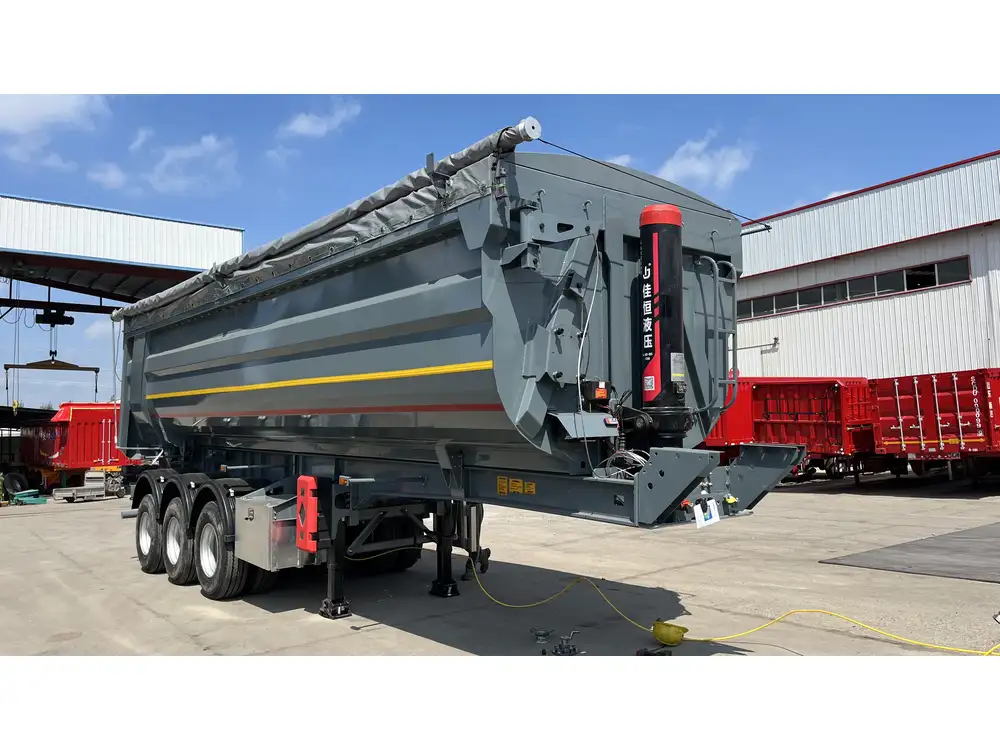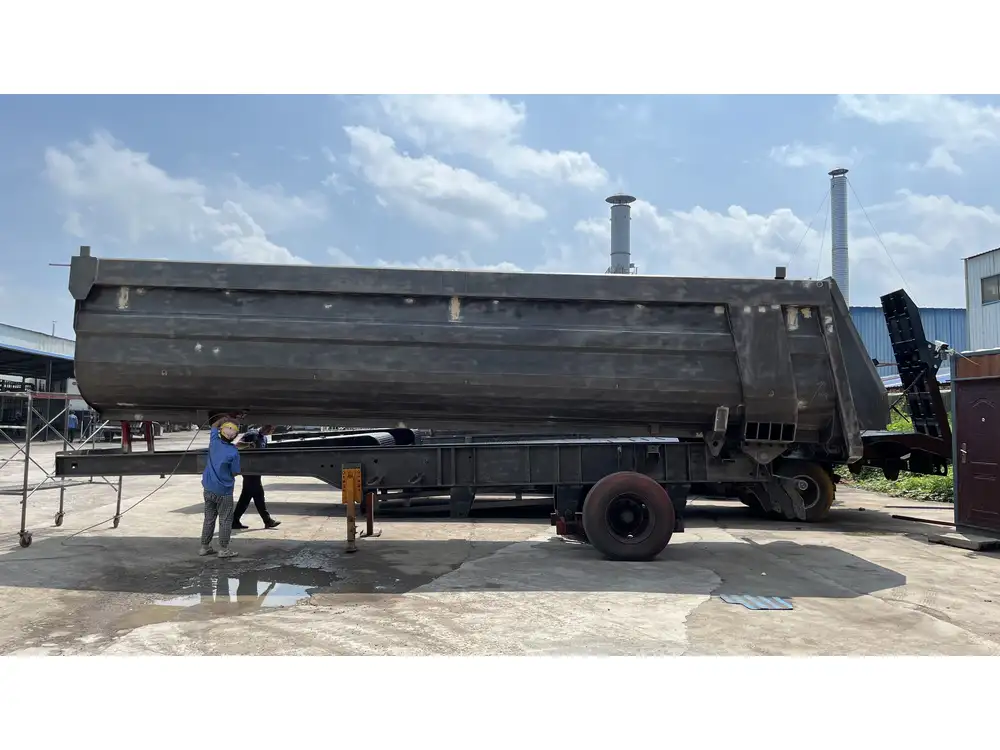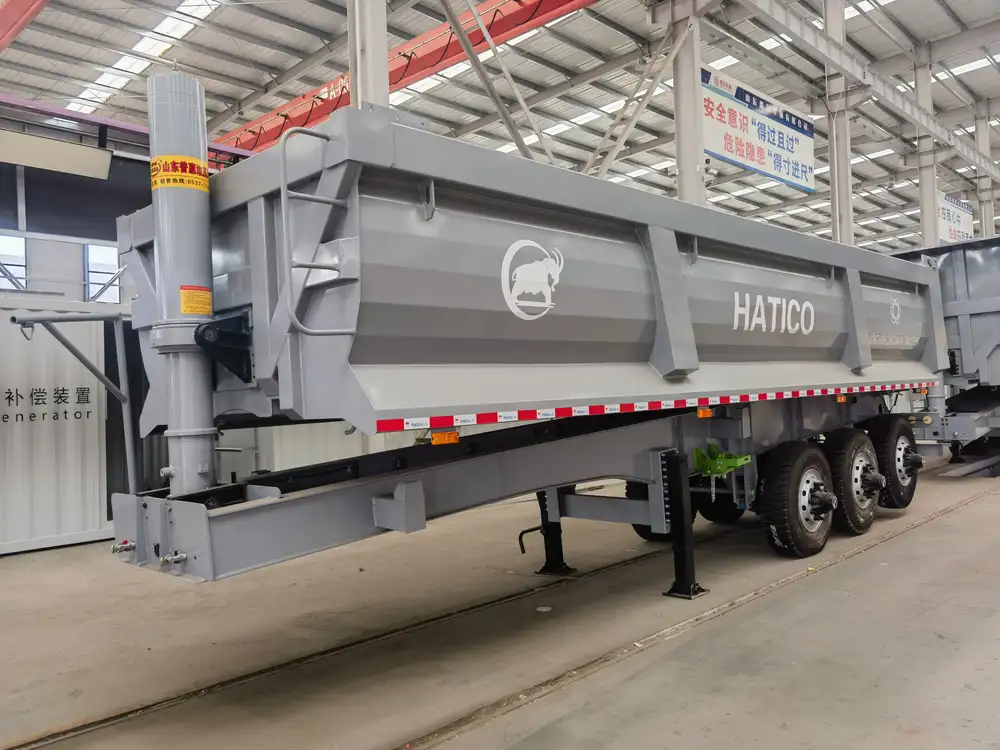When purchasing or utilizing a semi-trailer, the questions surrounding its dimensions are paramount. Both buyers and operators seek clarity on “how big is a trailer” to understand if it meets their transport needs. In this article, we will provide an exhaustive exploration of trailer sizes, types, and implications on operation, efficiency, and regulation.
Overview of Trailer Sizes and Their Significance
The Elements of Trailer Dimensions
Trailer size encompasses several critical measurements which ultimately dictate its usability. Key dimensions include:
| Dimension | Description |
|---|---|
| Length | Total measurement from the front to the back of the trailer. |
| Width | Distance across the trailer, usually fixed but can vary depending on type. |
| Height | Measurement from the ground to the top of the trailer. |
| Weight Capacity | Maximum weight that the trailer can safely transport, including cargo. |
Understanding these dimensions helps operators adhere to weight regulations and vehicle handling guidelines, ensuring safety and compliance.

Exploring Trailer Types and Their Sizes
There are various classifications of trailers that serve different purposes. Each type features its standard dimensions:
Flatbed Trailers
- Length: 48-53 feet
- Width: 102 inches (common)
- Height: Approximately 5 feet (varies based on cargo)
- Weight Capacity: Typically between 48,000-52,000 pounds
Flatbed trailers are versatile and can handle oversized cargo that does not fit within the confines of enclosed models.
Enclosed Trailers
- Length: 24-53 feet
- Width: 8.5 feet (general maximum)
- Height: Standard heights range from 8-9.5 feet
- Weight Capacity: 26,000-39,000 pounds depending on axle configuration
Enclosed trailers provide weather protection and security for the cargo.
Reefer Trailers (Refrigerated)
- Length: 28-53 feet
- Width: 102 inches
- Height: Similar to standard trailers but with specialized insulation
- Weight Capacity: 43,000-45,000 pounds
Ideal for transporting perishable goods, reefer trailers are crucial in the food supply chain.
Tank Trailers
- Length: 40-53 feet
- Width: 96-102 inches
- Height: Varies based on design
- Weight Capacity: 40,000-45,000 pounds of liquid
Tank trailers require specialized handling due to the nature of the materials transported.
Dump Trailers
- Length: 14-20 feet
- Width: Generally 8 feet
- Height: Varies; typically includes a higher dump angle
- Weight Capacity: Ranges from 10,000-25,000 pounds
Used primarily in construction, dump trailers are vital for transporting loose materials.
Special Considerations: Length and Weight Restrictions
Understanding federal and state regulations regarding lengths and weight capacities is crucial for any operator. In the U.S, the Federal Highway Administration mandates that the maximum length for trailers is typically 53 feet for semi-trailers. However, specific state regulations may vary, and operators should verify local laws to avoid fines or penalties.
Calculating the Effective Size of a Trailer
When assessing how big a trailer needs to be, several factors come into play:

1. Cargo Type and Dimensions
Before choosing a trailer size, one must consider the type of cargo being transported and its dimensions. For example, oversized machinery or bulk materials may require flatbeds, while delicate items might necessitate enclosed settings.
2. Load Distribution and Height
It’s essential to distribute weight evenly to maintain balance during transit. Operators should take into account the trailer’s height to ensure stability, especially during turns and while navigating uneven roads.
3. Routes and Accessibility
Understanding the routes can significantly impact trailer size selection. Urban areas sometimes restrict the dimensions of vehicles; therefore, knowing navigating limitations is imperative.

4. Efficiency and Fuel Considerations
Larger trailers can reduce the number of trips needed, improving fuel efficiency. However, excessive weight can lead to increased fuel consumption. Hence, it’s essential to strike a balance between load and trailer size.
Practical Implications of Trailer Sizes
Safety and Driver Handling
Larger trailers require experienced drivers and may involve additional safety protocols, such as checking blind spots and understanding the trailer’s turning radius. Moreover, the right size trailer can reduce the risk of accidents, including rollovers and collisions, which are critical in safely transporting goods.

Maintenance Costs
Larger semi-trailers may come with higher maintenance costs. More extensive components incur higher wear and tear, thereby demanding regular checks on brakes, tires, and couplings. Understanding the implications of size on maintenance can lead to cost savings in the long run.
Environmental Impact
Transportation is a significant contributor to carbon footprints. Considerations regarding trailer sizes can aid in minimizing environmental impact. By opting for the correct-sized trailer, companies can minimize fuel consumption and lower emissions. This awareness can also improve public perception and align with sustainability initiatives.
Trailer Size Comparisons: A Closer Look
To illustrate the versatility and range of trailer sizes, consider the following comparison between standard-sized trailers and specialized ones:
| Trailer Type | Length | Width | Weight Capacity | Use Case |
|---|---|---|---|---|
| Standard Flatbed | 48-53 feet | 102 inches | 48,000-52,000 lbs | General freight transport |
| Enclosed Trailer | 24-53 feet | 8.5 feet | 26,000-39,000 lbs | Shipping sensitive or high-value cargo |
| Reefer Trailer | 28-53 feet | 102 inches | 43,000-45,000 lbs | Transporting perishables |
| Dump Trailer | 14-20 feet | 8 feet | 10,000-25,000 lbs | Construction site material |
This table provides clarity in the operational ranges and particularly highlights how different dimensions suit specific needs.

Analyzing User Intent: Why Size Matters
When users search for “how big is a trailer,” they often seek precise information that can guide their purchasing decisions or operational strategies effectively. Their inquiries may be driven by:
- Purchasing Decisions: Potential buyers want to know if a specific trailer size will meet their transport capacity requirements.
- Operational Efficiency: Users may be identifying how different sizes influence efficiency and cost.
- Regulatory Compliance: Awareness of compliance with local and federal laws regarding trailer dimensions is crucial for avoiding fines.
- Cargo Consideration: Operators need clarity on what types of cargo fit within specific trailer dimensions.
Understanding and addressing these inquiries not only provides useful information for users but also optimizes the content for search engines, fostering better visibility.
Conclusion: Making Informed Choices About Trailer Sizes
Navigating the world of trailers can seem overwhelming, especially when it comes to sizing. However, by understanding the essential elements and implications of trailer dimensions, operators and buyers significantly enhance their decision-making processes.
Always remember to consider various factors, including cargo type, route constraints, regulatory requirements, and operational efficiency when determining how big a trailer needs to be. As the transport industry evolves, maintaining awareness of these factors is indispensable.
Ultimately, a well-informed approach to understanding trailer sizes leads to smarter decisions and contributes to safer, more efficient logistical operations.



